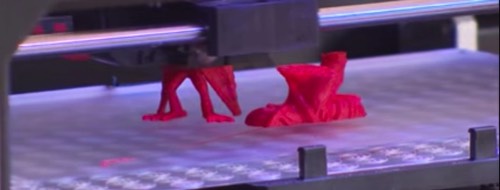Welcome to Constructing a Prototype!
"Predicting rain doesn't count. Building arks does" -- Warren Buffett
It's that time in the design cycle to Build, Build, Build. With modern technology such as 3D printing, the possibilities for creating a believable and testable prototype are almost endless.
Click on the image below to watch a short video on 3D printing:
It's that time in the design cycle to Build, Build, Build. With modern technology such as 3D printing, the possibilities for creating a believable and testable prototype are almost endless.
Click on the image below to watch a short video on 3D printing:
But, before we jump headlong into 3D printing, we may need to vet our design a little bit more. Careful and critical examination of our design may involve mathematical modeling on paper, extensive simulation, or preliminary physical prototyping using cardboard, balsa wood, or other household items.
This module in the Basic Engineering Design Suite will take the student through the prototyping stage of engineering design including modeling and simulation as well as constructing or building an actual physical prototype.
Learn more about Constructing Prototype
during the Engineering Design Cycle:
Presentation (.pdf) -- Formulating Models
Presentation (.pdf) -- Building Prototypes
Audio Recording (Youtube) -- Formulating Models
Audio Recording (Youtube) -- Building Prototypes
Assignment in MS Word (.docx) or Portable Document Format (.pdf)
Quiz in MS Word (.docx) or Portable Document Format (.pdf)
Build… and explore!
This suite of educational tools supports the Engineering Design Cycle, from beginning to end, in a way that allows the student to pursue open-ended engineering design from idea to prototype to redesign. These tools can be useful, for both teaching and learning, in a capstone design experience, other design classes, as well as in extracurricular or any other activities that involve formal design.
Explore More:
Overview
Identify the Problem
Research the Need
Design Solutions
Select the Best Solution
Test and Evaluate
Present the Solution
Redesign and Iterate
Acknowledgements:
This work was funded in part by the National Science Foundation (DUE-1245464). Any opinions, findings, and conclusions or recommendations expressed in this material are those of the author(s) and do not necessarily reflect the views of the National Science Foundation.
This work was funded in part by the National Science Foundation (DUE-1245464). Any opinions, findings, and conclusions or recommendations expressed in this material are those of the author(s) and do not necessarily reflect the views of the National Science Foundation.


